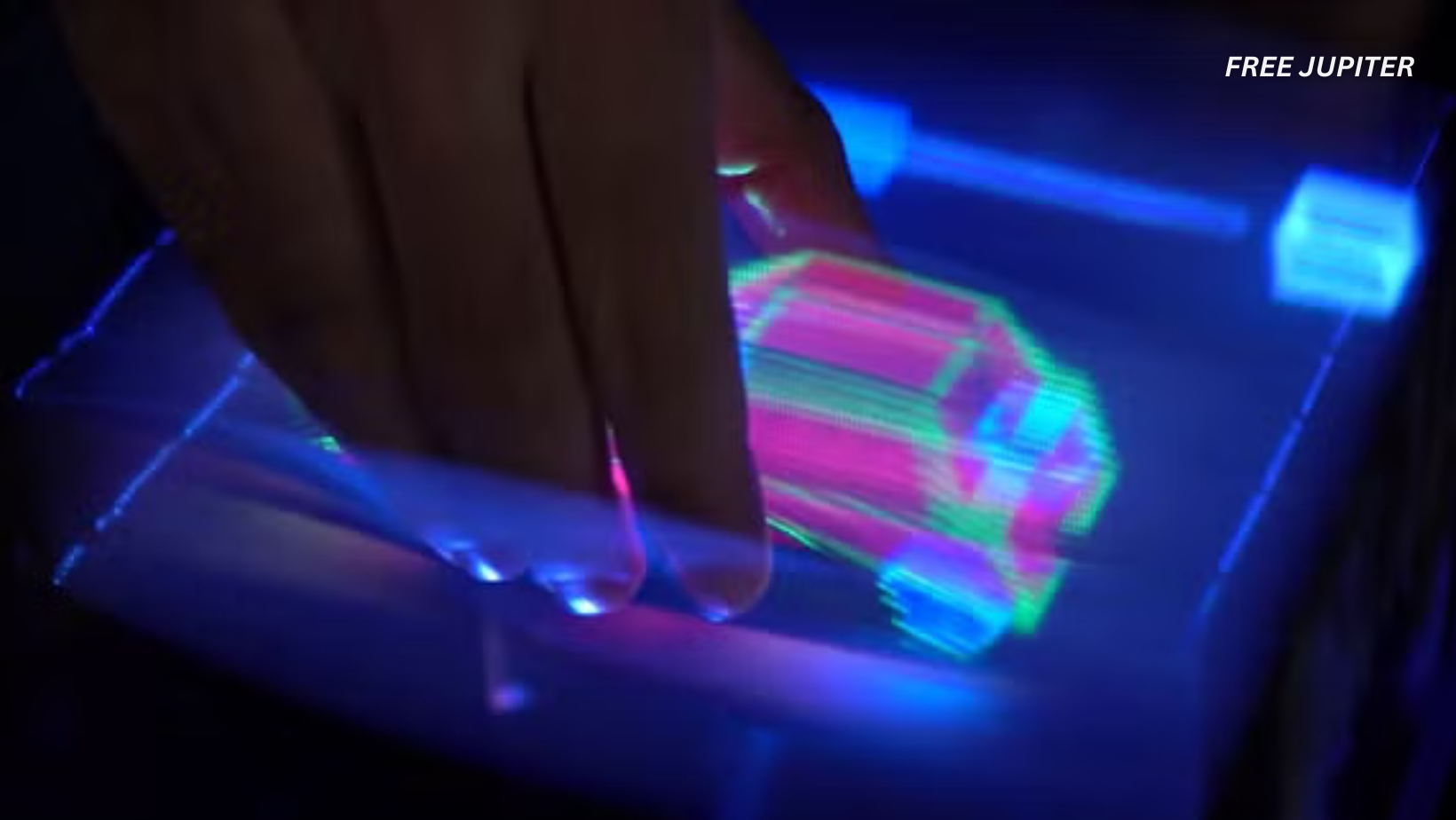The longstanding boundary between digital illusion and tangible reality has begun to blur, thanks to a pioneering development in mixed reality technology. In a stunning advancement, scientists have unveiled holograms that can not only be seen but also physically touched and manipulated—ushering in a new era where science fiction rapidly becomes scientific fact.
This innovation, detailed in a study made publicly available on March 6 via the HAL open archive, explores a technique that allows three-dimensional holographic images to be grabbed, poked, or moved using the human hand. The technology hinges on the incorporation of elastic materials into volumetric displays, overcoming one of the most persistent limitations in holography—physical interactivity.
Although the study is yet to undergo the rigorous scrutiny of peer review, a demonstrative video released alongside the research vividly showcases the remarkable capabilities of the system. Users are shown directly interacting with virtual objects suspended in mid-air, such as grasping a luminous cube and guiding its motion through space—actions once relegated to high-budget cinematic universes like that of Iron Man.
A New Dimension of Interaction
Dr. Asier Marzo, a computer science professor at the Public University of Navarra and the study’s lead author, explained the vision behind the breakthrough. “We are accustomed to the intuitive interaction offered by our smartphones—tapping, swiping, or dragging on a screen comes naturally to us. This technology extends that intuitive behavior into three-dimensional space, allowing users to directly engage with 3D content as though it were physically present,” he stated.
This research is set to be presented at the esteemed CHI conference on Human Factors in Computing Systems, taking place in Japan between April 26 and May 1. The team hopes their findings will not only inspire fellow researchers but also spark commercial interest in what could become the next major frontier in display technology.
Read more: 8 Ways To Tell If Your Smartphone Is Being Tracked – And What To Do
From Holographic Display to Human Touch
While holographic displays have long been used to add flair to museum exhibits or form the basis of smart glasses, they have always remained visual-only experiences. Touch was never part of the equation—until now.
Central to this breakthrough is the concept of volumetric displays, which rely on a component known as a diffuser. Traditionally, this diffuser is a rigid, high-frequency oscillating sheet upon which numerous images are rapidly and synchronously projected at varying depths. These multiple images converge to form the illusion of a three-dimensional object—a hologram.
However, the rigid nature of these oscillating sheets posed a significant problem. Any physical contact with them during operation could result in damage to the device or even injury to the user. This limitation rendered holograms untouchable—visually stunning but functionally untouchable.
The solution emerged in the form of a still-undisclosed flexible material that could withstand human touch without interfering with the mechanical function or the visual clarity of the hologram. By integrating this elastic medium, the team was able to maintain the precision of the holographic image while enabling users to touch and interact with the projected forms.
Overcoming the Challenges of Flexibility
While the flexible material allowed for touch, it introduced another complication—deformation. As users pressed or manipulated the material, it naturally bent and shifted. This physical distortion risked misaligning the holographic projection and degrading the experience.
To solve this, the researchers developed a sophisticated image correction system. This dynamic calibration ensured that the 3D image remained visually accurate regardless of how the elastic sheet was being deformed. In essence, the system adjusted the projection in real-time, maintaining the holographic illusion even under varying touch pressures and angles.
Although still in the experimental phase, this development has already sparked considerable excitement in both academic and commercial circles. It represents a fundamental shift in how digital information can be presented and engaged with in three-dimensional space.
Read more: Scientists Warn That AI Systems Have Officially Learned To Lie To Us
Potential Applications Across Industries
If brought to market, the implications of this technology are vast and varied. In education, for example, it could revolutionize the way students interact with complex subjects. Imagine anatomy students virtually dissecting a human body or engineering students assembling a mechanical engine—entirely through touchable holograms.
“Displays such as screens and mobile devices have become integral to work, learning, and play,” the researchers noted in their statement. “But introducing three-dimensional, physically interactive graphics takes these experiences to a new level—especially in fields where spatial understanding is critical.”
Museums and cultural institutions could also benefit tremendously. Rather than reading static placards or watching video loops, visitors could engage with holographic reconstructions of ancient artifacts, explore reconstructions of historical events, or manipulate virtual representations of natural wonders—all without needing wearable gear like VR headsets.
Another compelling advantage is the collaborative potential. Multiple users can interact with the same holographic object simultaneously, standing around the display and discussing or manipulating it together—much like people gathered around a physical model. This could transform teamwork dynamics in design studios, medical planning rooms, and even art installations.
Read more: Man Leaves The Hospital With Totally Artificial Heart In World-First
Where It’s Headed Next
While there is still work to be done before this technology reaches mass adoption, its foundational capabilities are now established. The research team continues to refine the display’s responsiveness and durability, and further peer-reviewed validation will likely guide its next development stages.
Moreover, questions remain about the durability and longevity of the elastic material used. What kind of wear and tear can it sustain? How will environmental factors like temperature or humidity affect performance? These practical considerations will be key in determining the technology’s commercial viability.
Nonetheless, the implications are profound. The marriage of haptics with holography opens up a new paradigm in human-computer interaction—one where digital elements no longer remain behind a screen but step into our space, ready to be held, examined, and moved with our own two hands.
The Future Feels Closer
Touch-sensitive holograms are no longer the stuff of sci-fi dreams. With this milestone, a new chapter is being written in the story of how humans interact with machines and data. No longer confined to tapping on glass screens or donning headgear to enter virtual realms, the future might be one where we simply reach out and feel the information we once only saw.
In this unfolding narrative, the digital world grows ever more tactile, immersive, and real—bringing with it opportunities as boundless as human imagination.









